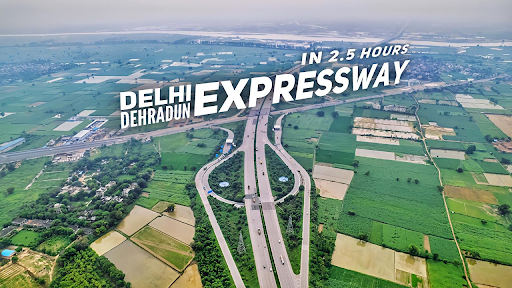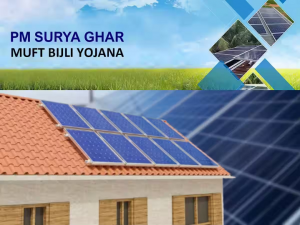The Delhi-Dehradun Expressway is a transformative infrastructure project that aims to enhance connectivity between the national capital and the capital city of Uttarakhand. As one of India’s most anticipated expressways, it promises to reduce travel time, enhance trade, and provide a seamless driving experience through advanced road engineering and ecological considerations.
This expressway is part of India’s extensive expressway expansion plan, much like the Delhi-Mumbai Expressway, and is being constructed with cutting-edge technology to ensure sustainability and efficiency.
In this comprehensive blog, we will explore the Delhi-Dehradun Expressway route, construction details, map, entry and exit points, current status, and more.
Also Read:- MHADA to construct 8 lakh houses across the State in 5 years
Delhi-Dehradun Expressway Overview
The Delhi-Dehradun Expressway is an ambitious project undertaken by the National Highways Authority of India (NHAI) to improve connectivity between Delhi and Dehradun. It is a 210-kilometer-long expressway that significantly reduces the travel time between these two major cities from around 6 hours to just 2.5 hours.
This six-lane expressway is being built with multiple tunnels, flyovers, and eco-friendly initiatives to preserve the rich biodiversity of Uttarakhand. One of its most notable features is the 7 km long elevated wildlife corridor near Rajaji National Park, ensuring minimal disruption to the natural habitat of animals.
Delhi-Dehradun Expressway Route
The expressway starts from Akshardham in Delhi and passes through Uttar Pradesh and Uttarakhand, before ending in Dehradun. The major districts and towns it covers include:
- Delhi (Akshardham)
- Uttar Pradesh (Ghaziabad, Baghpat, Shamli, Muzaffarnagar, Saharanpur)
- Uttarakhand (Dehradun)
The expressway has been designed to ensure minimum impact on existing villages and settlements while providing high-speed connectivity.
Delhi-Dehradun Expressway Route Map
The route map highlights the entire expressway alignment, showcasing important towns, interchanges, tunnels, and bypasses. This detailed map also includes the village list and the specific locations of key infrastructure projects, including bridges and green corridors.
Delhi-Dehradun Expressway Construction Progress and Status 2025
The construction of the Delhi-Dehradun Expressway is divided into four major phases:
Delhi-Dehradun Expressway Phase 1
- Covers Akshardham (Delhi) to Eastern Peripheral Expressway
- Includes a section from Akshardham to Loni with an elevated corridor
- Construction is progressing rapidly, with significant work completed
Phase 2
- Extends from Eastern Peripheral Expressway to Saharanpur
- Features multiple interchanges and green corridors
Phase 3
- Covers Saharanpur to Ganeshpur (Uttarakhand border)
- Includes wildlife crossings to ensure ecological preservation
Phase 4
- Final stretch from Ganeshpur to Dehradun
- Features the longest wildlife corridor in India over Rajaji National Park
Current Status of the Delhi-Dehradun Expressway (2025)
As of 2025, the construction of the expressway is in advanced stages, with multiple phases nearing completion. The expected Delhi-Dehradun Expressway opening date is projected for late 2025.
Delhi-Dehradun Expressway Entry and Exit Points
The expressway features strategically placed entry and exit points to ensure smooth traffic flow and accessibility. Some of the key entry-exit points are:
- Delhi Entry Point: Akshardham
- Ghaziabad Exit Point: Near Loni
- Muzaffarnagar Entry Point: Shamli Road
- Saharanpur Exit Point: Bypass Road
- Dehradun Entry Point: Near Asharodi
These entry and exit points ensure that commuters can access the expressway conveniently while connecting seamlessly with other highways.
Delhi-Dehradun Expressway Distance and Travel Time
The total Delhi-Dehradun Expressway distance is 210 km, with a significant reduction in travel time:
- Previous travel time: 5-6 hours
- New travel time: 2.5 hours
This reduction is a game-changer for frequent travelers, daily commuters, and logistics providers, ensuring quicker and more efficient connectivity between Delhi and Dehradun.
Ecological and Safety Features
The Delhi-Dehradun Expressway is designed with a strong focus on sustainability and safety. Key highlights include:
- India’s longest wildlife corridor (7 km) over Rajaji National Park
- Noise barriers and animal underpasses to minimize environmental impact
- Advanced traffic monitoring systems for enhanced road safety
- Dedicated emergency response units for quick accident management
Economic and Real Estate Impact
The Delhi-Dehradun Expressway is expected to boost economic activities along its corridor. Some key impacts include:
- Increased tourism in Uttarakhand, making destinations like Mussoorie and Rishikesh more accessible
- Rising real estate prices along the expressway due to improved connectivity
- Enhanced logistics and trade between Delhi, Uttar Pradesh, and Uttarakhand
Conclusion
The Delhi-Dehradun Expressway is set to redefine travel between the national capital and Uttarakhand. With its cutting-edge infrastructure, ecological considerations, and travel time reduction, it is one of the most awaited expressways in India.
As real estate developments are expected to rise along this corridor, platforms like Housiey will help investors and homebuyers make informed decisions.
Looking for more travel and infrastructure updates? Read our latest blog on “Patna Airport” for detailed insights!
FAQs
The Delhi-Dehradun Expressway is a transformative infrastructure project that aims to enhance connectivity between the national capital and the capital city of Uttarakhand. As one of India’s most anticipated expressways, it promises to reduce travel time, enhance trade, and provide a seamless driving experience through advanced road engineering and ecological considerations.
This expressway is part of India’s extensive expressway expansion plan, much like the Delhi-Mumbai Expressway, and is being constructed with cutting-edge technology to ensure sustainability and efficiency.
In this comprehensive blog, we will explore the Delhi-Dehradun Expressway route, construction details, map, entry and exit points, current status, and more.
Also Read:- MHADA to construct 8 lakh houses across the State in 5 years
Delhi-Dehradun Expressway Overview
The Delhi-Dehradun Expressway is an ambitious project undertaken by the National Highways Authority of India (NHAI) to improve connectivity between Delhi and Dehradun. It is a 210-kilometer-long expressway that significantly reduces the travel time between these two major cities from around 6 hours to just 2.5 hours.
This six-lane expressway is being built with multiple tunnels, flyovers, and eco-friendly initiatives to preserve the rich biodiversity of Uttarakhand. One of its most notable features is the 7 km long elevated wildlife corridor near Rajaji National Park, ensuring minimal disruption to the natural habitat of animals.
Delhi-Dehradun Expressway Route
The expressway starts from Akshardham in Delhi and passes through Uttar Pradesh and Uttarakhand, before ending in Dehradun. The major districts and towns it covers include:
- Delhi (Akshardham)
- Uttar Pradesh (Ghaziabad, Baghpat, Shamli, Muzaffarnagar, Saharanpur)
- Uttarakhand (Dehradun)
The expressway has been designed to ensure minimum impact on existing villages and settlements while providing high-speed connectivity.
Delhi-Dehradun Expressway Route Map
The route map highlights the entire expressway alignment, showcasing important towns, interchanges, tunnels, and bypasses. This detailed map also includes the village list and the specific locations of key infrastructure projects, including bridges and green corridors.
Delhi-Dehradun Expressway Construction Progress and Status 2025
The construction of the Delhi-Dehradun Expressway is divided into four major phases:
Delhi-Dehradun Expressway Phase 1
- Covers Akshardham (Delhi) to Eastern Peripheral Expressway
- Includes a section from Akshardham to Loni with an elevated corridor
- Construction is progressing rapidly, with significant work completed
Phase 2
- Extends from Eastern Peripheral Expressway to Saharanpur
- Features multiple interchanges and green corridors
Phase 3
- Covers Saharanpur to Ganeshpur (Uttarakhand border)
- Includes wildlife crossings to ensure ecological preservation
Phase 4
- Final stretch from Ganeshpur to Dehradun
- Features the longest wildlife corridor in India over Rajaji National Park
Current Status of the Delhi-Dehradun Expressway (2025)
As of 2025, the construction of the expressway is in advanced stages, with multiple phases nearing completion. The expected Delhi-Dehradun Expressway opening date is projected for late 2025.
Delhi-Dehradun Expressway Entry and Exit Points
The expressway features strategically placed entry and exit points to ensure smooth traffic flow and accessibility. Some of the key entry-exit points are:
- Delhi Entry Point: Akshardham
- Ghaziabad Exit Point: Near Loni
- Muzaffarnagar Entry Point: Shamli Road
- Saharanpur Exit Point: Bypass Road
- Dehradun Entry Point: Near Asharodi
These entry and exit points ensure that commuters can access the expressway conveniently while connecting seamlessly with other highways.
Delhi-Dehradun Expressway Distance and Travel Time
The total Delhi-Dehradun Expressway distance is 210 km, with a significant reduction in travel time:
- Previous travel time: 5-6 hours
- New travel time: 2.5 hours
This reduction is a game-changer for frequent travelers, daily commuters, and logistics providers, ensuring quicker and more efficient connectivity between Delhi and Dehradun.
Ecological and Safety Features
The Delhi-Dehradun Expressway is designed with a strong focus on sustainability and safety. Key highlights include:
- India’s longest wildlife corridor (7 km) over Rajaji National Park
- Noise barriers and animal underpasses to minimize environmental impact
- Advanced traffic monitoring systems for enhanced road safety
- Dedicated emergency response units for quick accident management
Economic and Real Estate Impact
The Delhi-Dehradun Expressway is expected to boost economic activities along its corridor. Some key impacts include:
- Increased tourism in Uttarakhand, making destinations like Mussoorie and Rishikesh more accessible
- Rising real estate prices along the expressway due to improved connectivity
- Enhanced logistics and trade between Delhi, Uttar Pradesh, and Uttarakhand
Conclusion
The Delhi-Dehradun Expressway is set to redefine travel between the national capital and Uttarakhand. With its cutting-edge infrastructure, ecological considerations, and travel time reduction, it is one of the most awaited expressways in India.
As real estate developments are expected to rise along this corridor, platforms like Housiey will help investors and homebuyers make informed decisions.
Looking for more travel and infrastructure updates? Read our latest blog on “Patna Airport” for detailed insights!
FAQs






